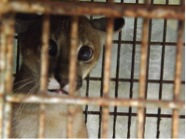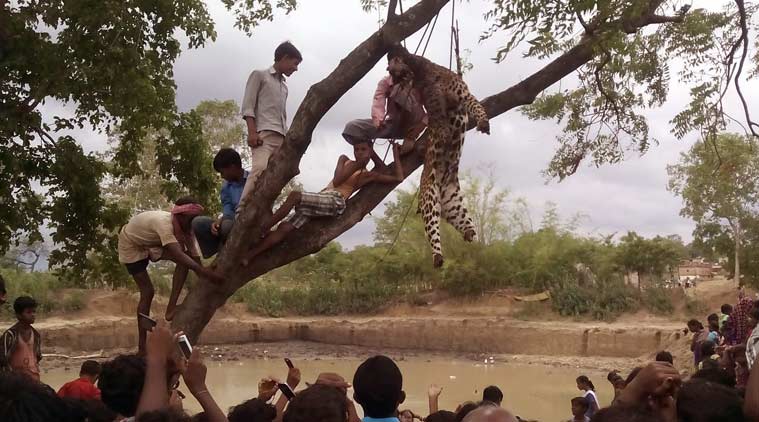“On the Trail” # 9 is available.
Information and analysis bulletin on animal poaching and smuggling
April, May and June 2015.
pdf 106 pages, 5,7 Mo
Whales and marine mammals, pages 5 – 7
 |
 |
| State of Carabobo, Venezuela June 2015. Page 44. © Entorno inteligente |
Purulia, State of West Bengal, India June 20, 2015. Page 51. © Express photo |
Crocodile Fashion Victims. Page 20.
Kering, the French luxury flagship, is cuddling up to CITES and IUCN (International Union for Conservation of Nature). Kering wants to save crocodiles and make handbags out of them at the same time.
Kering operates the brands Gucci, Saint Laurent, Alexander McQueen, and Stella McCartney. Kering owns the tannery France Croco in the French department of Manche, in western France.
The CITES Secretariat claims to be enthusiastic about how intensely Kering and the IUCN crocodile group are working together. Kering wants to save the Nile crocodiles of Madagascar. At the same time, Kering is aggressively pursuing Asian crocodiles, particularly in the repulsive crocodile farms in Cambodia. These overpopulated and foul-smelling establishments lock up thousands of these necrophagous and omnivorous reptiles wading about in the polluted pools. The rest of the time, they languish on beaten and compact earth. These prison conditions completely disregard and distort the territorial instinct of crocodiles, their interaction with some bird species, and
their rituals for courting, for protecting eggs, and for newborns. This is abuse.
There are 100 to 300 remaining wild crocodiles in Cambodia, which is irrigated by the Upper Mekong Basin. There were over 10,000 of them 10 years ago. The eggs and immature crocodiles are collected and caught around Tonle Sap Lake. The breeders look for crocodiles born in natural wetlands. These crocodiles are more resistant to illness and their reproduction rates are higher than farmed crocodiles.
Each year, 4 million snakes are fished to feed around 200,000 farmed crocodiles. “Crocodiles prefer snakes to fish because of their warm blood,” claims a leader of the Cambodian crocodile industry. The snakes of Tonle Sap lake are endangered. The snakes are now fished with gillnets. One of the snake species, Enhydris longicauda, is endemic to the lake. The water snakes are an essential part of wetland ecosystems. They feed the birds . . . and the last wild crocodiles. The intensive crocodile farms of Cambodia are ecological disasters and significant sources of profit.
They supply the market for shoes, bags, belts and wallets, and mobile phone and tablet sheaths.
Kering wants to import skins from Cambodia. An initial test on 1,000 skins is planned.
“We have the softest skins,” claims the president of the Association of Cambodian Crocodile Farm Development. For this promising test, Cambodia and Kering can count on a favorable opinion from CITES. If Kering continues on this path, this could taint its image in France and elsewhere.
 Imprimer cet article
Imprimer cet article









